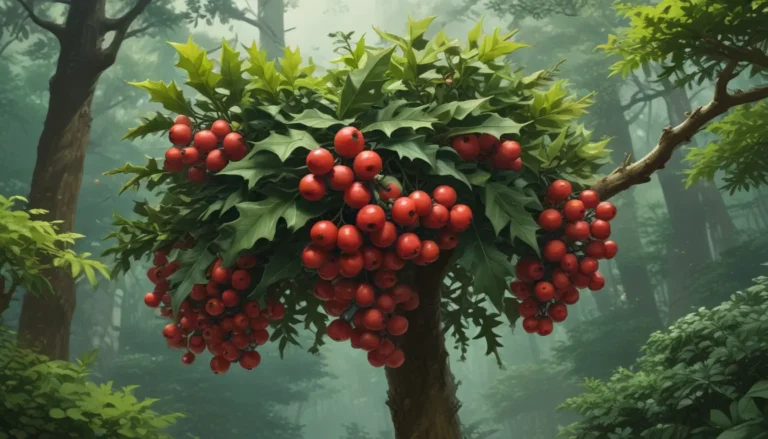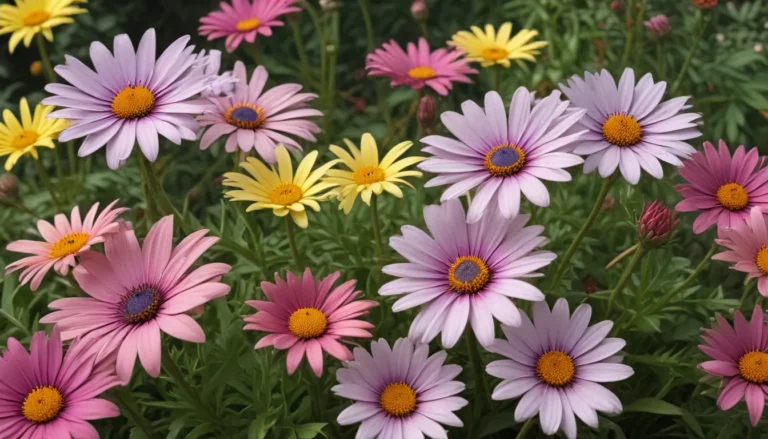How to Cultivate and Grow Love Lies Bleeding

Overview of Amaranthus Caudatus
Love lies bleeding, also known as Amaranthus caudatus, is an annual plant suitable for USDA Hardiness Zones 2 to 11. Belonging to the Amaranthaceae family, this ornamental specimen is a vibrant addition to any home garden.
A type of grain, it is just one of more than 60 species within the Amaranthus genus, with cultivated varieties showcasing a range of colors beyond the traditional reddish-purple and gold. A striking plant, A. caudatus produces velvety, drooping flower panicles that serve as dramatic focal points in gardens from summer to fall.
In this comprehensive guide, we’ll cover everything you need to know to successfully grow love lies bleeding in your own backyard.
Cultivation and History
The botanical name, Amaranthus caudatus, stems from the Greek “amarantos” meaning never-fading, and the Latin “caudatus” meaning tailed. The unique moniker “love lies bleeding” is believed to have originated during the Victorian era, reflecting a language of flowers used for subtle expressions of emotion.
Amaranth has ancient origins in the Andes Mountains of South America, where it was cultivated as a grain crop over 6,000 years ago. The plant’s edible seeds and leaves have been historically used for culinary and medicinal purposes.
Today, love lies bleeding is primarily grown as an ornamental plant, prized for its vibrant colors and drought tolerance. Its upright growth habit and unique flower tassels make it a standout in any garden.
Propagation
There are two primary methods of propagating love lies bleeding: from seeds or nursery plants.
From Seed:
- Seeds are tiny, sprouting in three to five days.
- Start seeds indoors in well-draining potting mix 8-10 weeks before the last spring frost.
- Seeds should be sown shallowly and kept moist for optimal germination.
From Seedlings/Transplanting:
- Space seedlings or plants 18 inches apart in well-prepared garden soil.
- Transplant outdoors after the danger of frost has passed, ensuring plants are set at the same depth as their original containers.
- Provide support with stakes if necessary.
How to Grow
Love lies bleeding thrives in full sun locations with average to organically-rich, well-draining soil. While the plant can tolerate part shade, full sun is best for vibrant flower color. Avoid excessive nitrogen fertilization to prevent toxicity in the leaves.
Maintain consistent soil moisture, particularly during the plant’s establishment phase. Once mature, love lies bleeding displays above-average drought tolerance and salt tolerance.
Growing Tips
To ensure your love lies bleeding plants thrive, remember to:
- Provide full sun for optimal flower color.
- Start seeds indoors 8-10 weeks before the last frost.
- Transplant outdoors after frost danger has passed.
- Avoid excessive fertilization.
- Maintain adequate moisture levels.
Although there are several factors to keep in mind, once you’ve mastered the basics, incorporating love lies bleeding into your garden can become a regular practice.
Pruning and Maintenance
Throughout the growing season, monitor plant stalks for any signs of floppiness and provide support as needed. Prune damaged or diseased plant material to prevent pests and diseases. At season’s end, harvest seeds or dry stalks for everlasting floral arrangements.
Cultivars to Select
When choosing love lies bleeding cultivars, ensure you’re selecting A. caudatus for your garden. Some popular varieties include:
- Coral Fountain: Featuring light reddish-purple tassels.
- Dreadlocks: Boasting purplish-red tassels.
- Emerald Tassels: Known for its green flower tails.
- Fat Spike: With upright, finger-like purplish-red flower spikes.
Pests and Disease Management
Love lies bleeding is relatively pest-free but may attract aphids, Japanese beetles, and snails. To manage these pests, consider techniques such as blast water from a hose, insecticidal soap, or organic neem oil.
When it comes to diseases like Anthracnose and wet rot, copper-based fungicides may help, although plant removal may be necessary in severe cases. Preventative measures like companion planting and proper watering can also reduce disease risks.
Harvesting and Storage
Love lies bleeding seeds ripen in late summer and can be collected for eating or replanting. To harvest seeds, wait until tassels begin to lose color, then gently rub dry tassels to release ripe seeds. Store seeds in an airtight container in a cool, dark place.
For leaves, harvest just before use and store in a zippered plastic bag with a damp paper towel in the refrigerator for up to two days.
Recipes and Cooking Ideas
In addition to saving seeds, consider incorporating love lies bleeding leaves into your meals. Young, tender leaves are ideal for salads, sandwiches, or sauteed dishes. For recipe inspiration, try making creamy amaranth porridge or explore cooking with amaranth to diversify your culinary creations.
In Conclusion
Love lies bleeding is an annual showstopper that can enhance any garden with its vibrant colors and unique flower tassels. By following these tips for cultivation and maintenance, you can enjoy the beauty and versatility of this ornamental plant from summer to fall.
If you’ve grown love lies bleeding in your garden, share your experiences in the comments below. For more information on gardening and flowers, check out our related articles on perennial plantings and other popular flower varieties.
Remember to start seeds early, provide full sun, and maintain adequate moisture for optimal growth. With love lies bleeding in your garden, you’re sure to capture attention and start conversations with your unique and striking plant selection.





